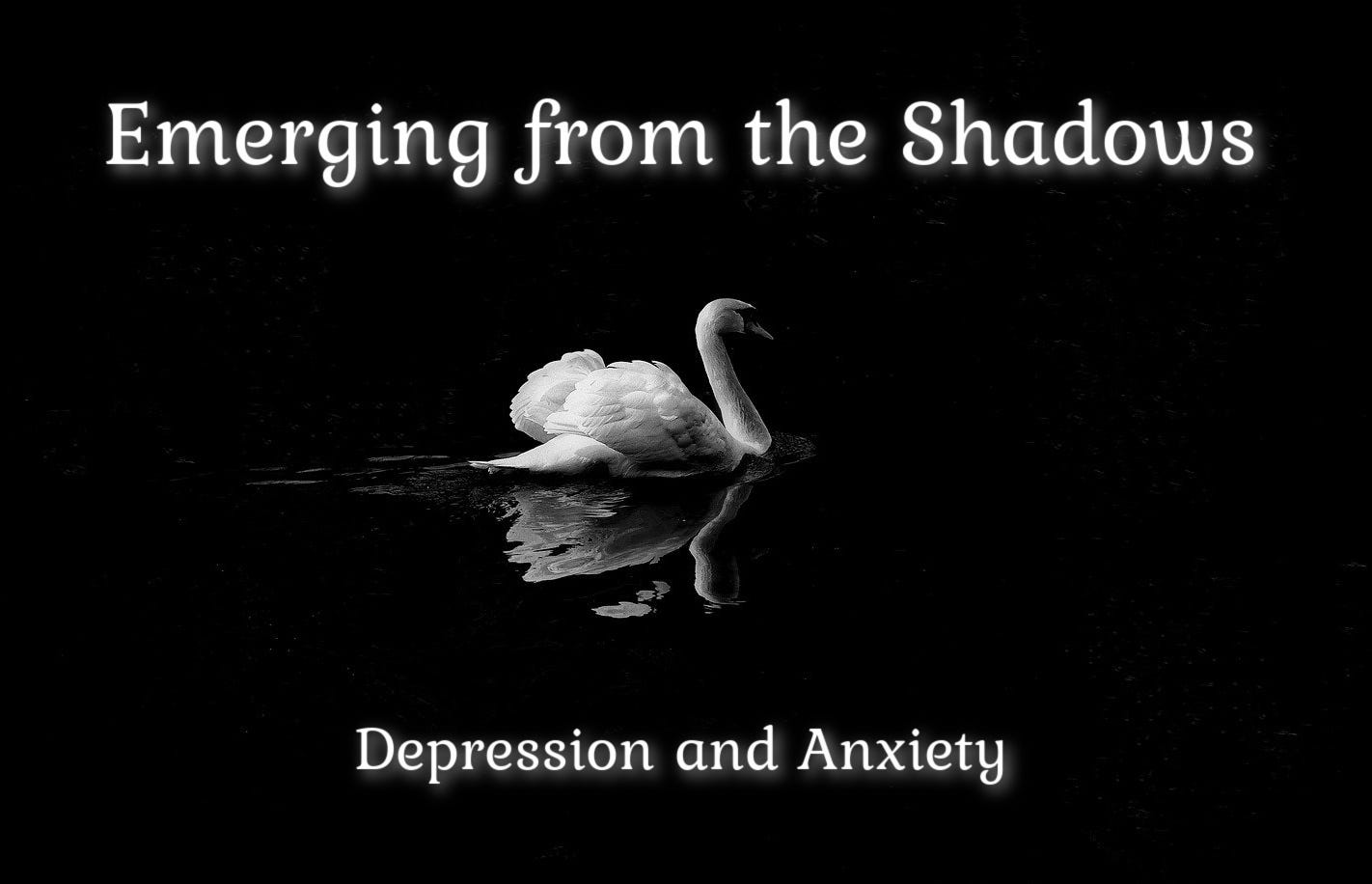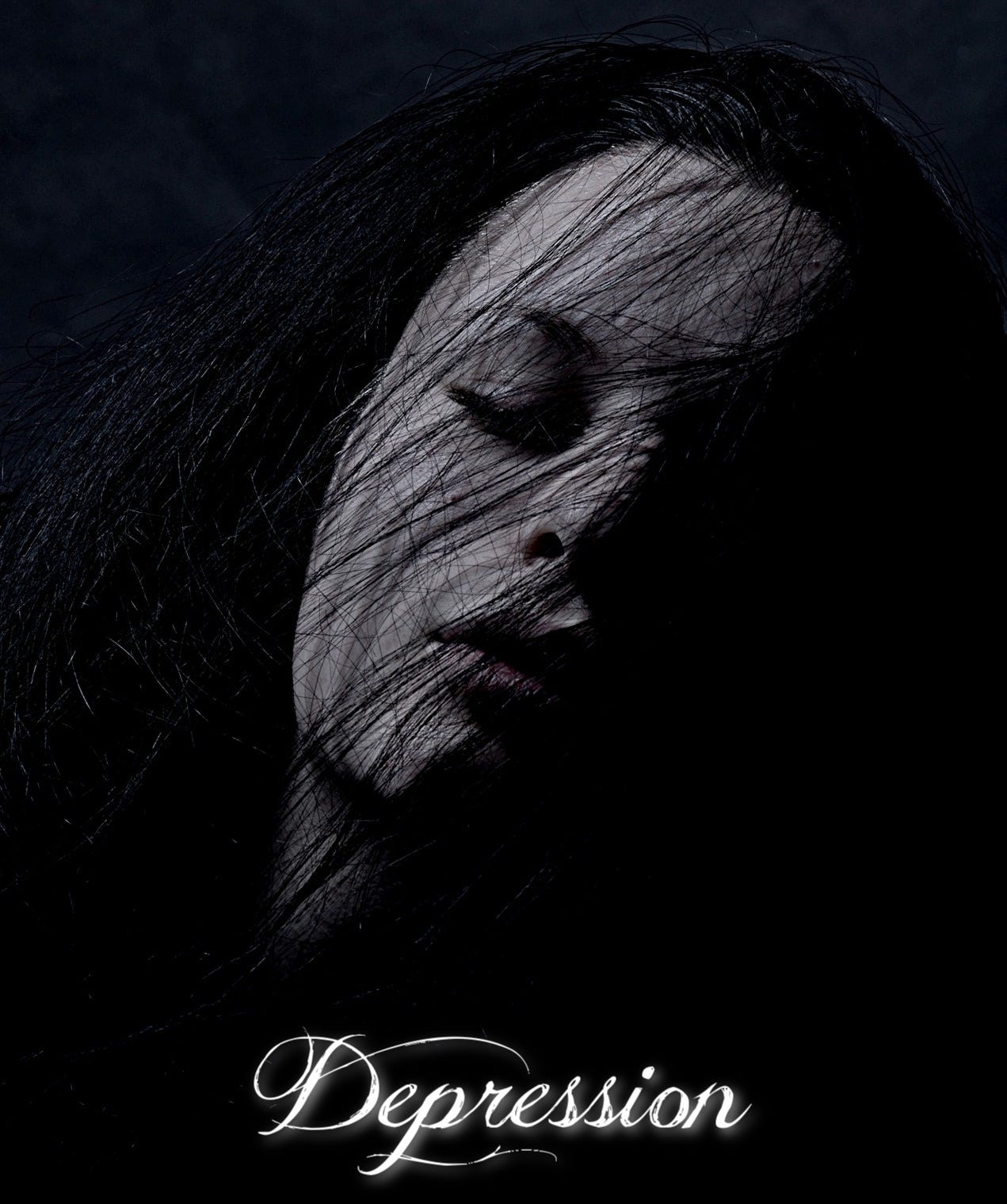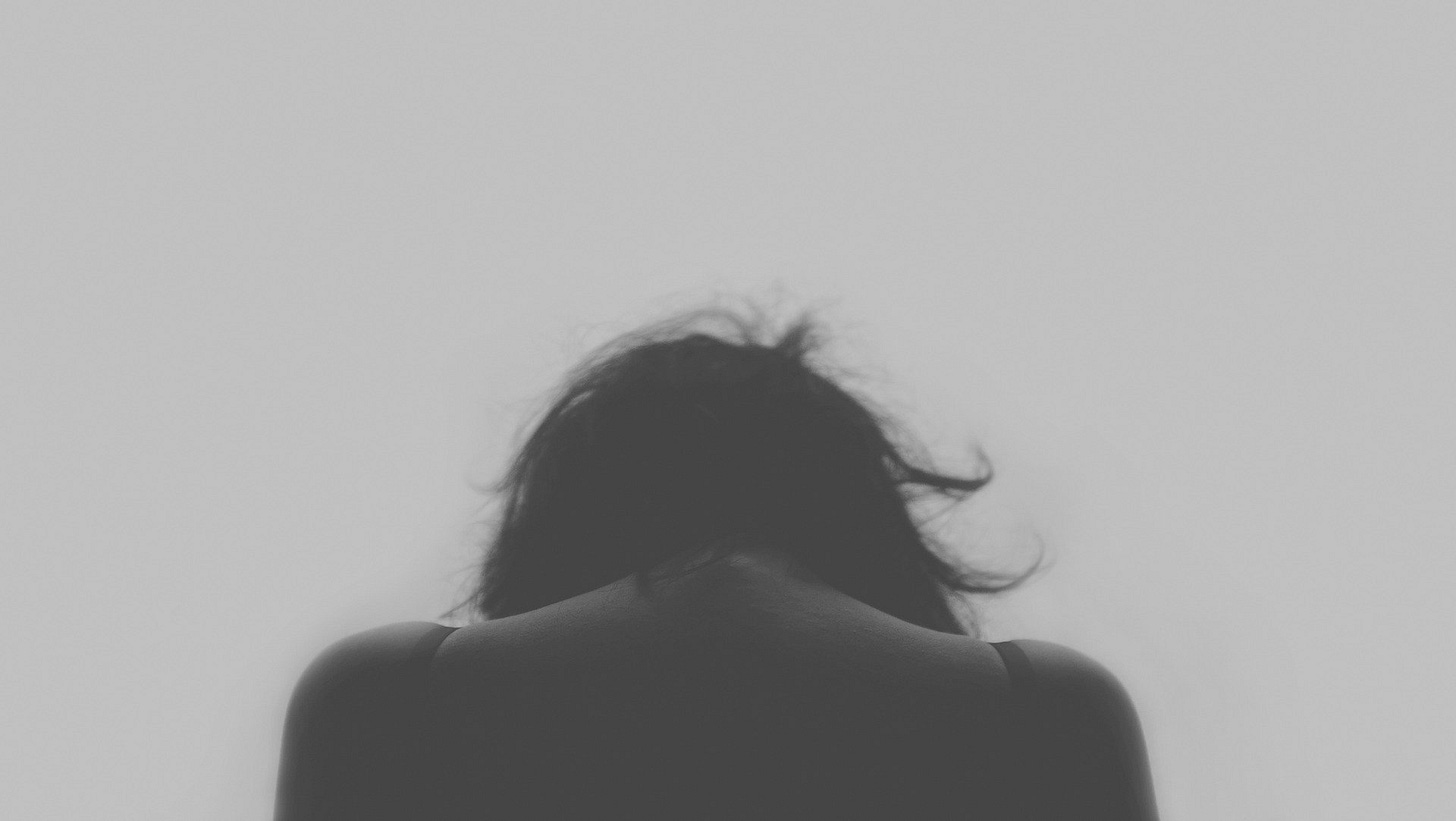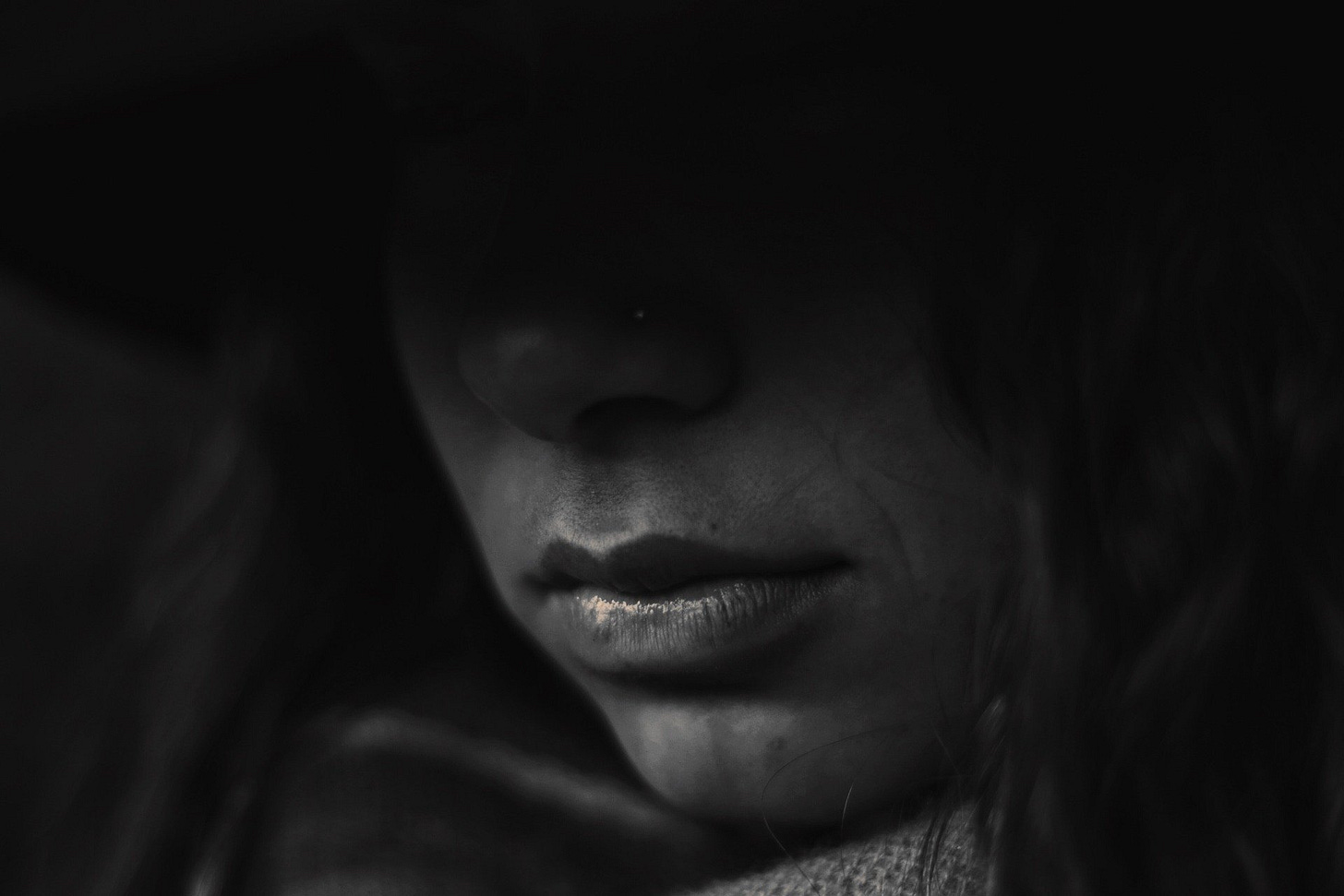Here’s a topic that affects many people around the globe and for me personally, depression has been a constant concern over the years, in varying degrees. Understanding the psychological, physiological and environmental factors that cause and exacerbate these conditions has helped me gain a handle on how I’m affected and hopefully what I share here will help you too.
Whether you’re the one dealing with depression and/or anxiety or a loved one, friend or colleague, these afflictions can affect many (if not all) aspects in life. While sadness and nervousness are natural parts of life, in response to various stimuli or circumstances, depression and anxiety can become like an anchor, dragging us down and stifling our enjoyment, creativity and other areas that are important to us.
A 2 part series, this post covers depression and anxiety, while the next post focuses on the herbal helpers that can alleviate, if not eradicate their hold on us. Along with other changes that can be incorporated, creating a plan to tackle these afflictions head on will pave the way to not only a clearer understanding, but a position where we are in control, not the other way around.
There are different forms of depression and while many like to say that they’re depressed at any given time, the clinical/official diagnosis involves the symptoms being present for at least 2 weeks. While intermittent sadness is natural, it gets serious if sleeping, eating and enjoying life are affected.
Different forms of depression include:
Seasonal Affective Disorder: Mostly associated with Winter when the occurrence of natural sunlight is reduced. Depressive symptoms can include social withdrawal, prolonged sleep and weight gain. This type of depression usually lifts when Spring and Summer come along, but it returns in Winter.
Bipolar Disorder: Specifically occurring in the low moods of this disorder, major depression (also known as Bipolar depression) is the other end of the pendulum swing, where the opposite effects include euphoria, mania and excitability.
Postpartum Depression: More serious than the ‘baby blues’, this form of depression can occur after giving birth, resulting in major depression that can include severe exhaustion, sadness and anxiety. Mothers with this affliction find it difficult or impossible to care for their babies, themselves and the rest of the family.
Psychotic Depression: When a person already deals with psychosis or a disturbed mental state, this form of severe depression blends in with other symptoms, including delusions and hallucinations. Worrying about illness, poverty or guilt (whether real or perceived) exacerbates the condition.
Persistent Depressive Disorder: Also known as Dysthymia, this form of depression lasts for at least 2 years, with variations ranging from mild depression to full-blown major depression, depending on the situation or circumstances.
Symptoms and Signs
While depressive episodes and their causes vary, there are signs and symptoms that can help with diagnosis and observation of some (if not all) of the following that occur nearly every day for at least 2 weeks indicates that depression is an issue.
Pessimism and feelings of hopelessness or worthlessness
Persisting sadness and feeling empty
Irritability, anxiety and restlessness
Guilt and suicidal thoughts/attempts
Lack of pleasure or interest in hobbies or activities
Fatigue, low energy and moving slowly
Issues with concentration, making decisions or remembering things
Loss of appetite or weight changes
Sleep issues such as oversleeping or insomnia
Digestion problems or headaches and pain without obvious causes
Of course, you don’t have to have all the above symptoms to be considered as clinically depressed. Some might be more severe for certain individuals while others may exhibit all the symptoms at lesser degrees.
Some symptoms might depend on the extent or stage of the depression. If the symptoms you have are persistent or severe, it’s time to take stock of your life and see a doctor or talk with someone you trust before deciding what to do.
Risk Factors
Just about everyone in the world has experienced some form of depression in their lives, which isn’t hard to understand, given the common triggers and situations that we deal with on a daily basis.
Whether it’s the news of disasters, horrible stories of murder and mayhem or poverty, animal and child abuse, environmental catastrophes and so on, we are constantly barraged by things that can make us want to retreat into our comfort zones.
In our personal lives, we may be dealing with feelings of hopelessness due to things like aging, the loss of a loved one or soul-destroying jobs that we endure just to pay the bills. While depression affects us as adults, there are growing cases of children diagnosed as depressed and dealing with high levels of anxiety.
Risk factors of depression can include:
Midlife crisis or aging and fear of death
Illnesses and the side effects of medication
Substance abuse: alcohol and drugs
Cultural pressures and lack of support
Isolation and social anxiety
Issues with weight and appearance
Ignored emotional needs and unfulfilling relationships
Failures and a lack of purpose in life
No outlet for creativity or a meaningful job
Abusive relationships and bullying
Shame, guilt and major life changes
Poverty, homelessness and trauma
Gender related issues, racism and religious persecution
A family history of depression
Understanding the root causes of depression is the first step in figuring out how to deal with it. While medication such as antidepressants can be useful for some (I am taking them, and they helped drag me out of a dark hole) they have their own side effects, and medication is only one of the tools available.
If issues in society or concern over the welfare of animals is a trigger for your depression, volunteering or helping those in need is a way of bringing it full circle and alleviating the symptoms. Other therapies can include meditation and the practice of mindfulness (living in the moment and focusing on one thing at a time), counselling and psychotherapy, positive affirmations and creative visualizations.
Whether it’s therapy, medication or other modalities, everyone experiences depression differently and it could take some time for you to figure out what works for you. Antidepressants can take 4-6 weeks before they start taking effect, although I felt the relief after one week of taking Escitalopram.
Anxiety and depression are often experienced together or alternately, and while anxiety is a part of life on occasion, such as an upcoming job interview, making an important decision or a looming confrontation or meeting, it can become crippling and debilitating.
Like intermittent sadness is different to depression, worrying or fearing something is different to full blown and recurring anxiety. This disorder is not temporary, and it can get worse over time, interfering with our lives and affecting how we perform at work, school and in our personal relationships.
Different forms of anxiety include:
Generalized Anxiety Disorder: also known as GAD, it involves excessive anxiety on most days for at least 6 months, triggered by health issues, social interaction, work and other circumstances. The symptoms can include:
Restlessness and feeling on edge
Fatigue and difficulty with focus and concentration
Irritability and muscle tension
Lack of control over worrying
Insomnia or trouble with staying asleep
Panic Disorder: includes unexpected and recurring panic attacks, which include periods of sudden intense fear that peak within minutes. They can be triggered by a fear of another person, situation, a location or an object and they can sometimes occur without warning. The experiences can include:
Sweating and shaking or trembling
Accelerated heart rate, pounding or heart palpitations
Sensations of choking, smothering or shortness of breath
Feeling out of control or fear of impending doom
Avoiding situations, people, behaviors and places that trigger the attacks
Running away to hide and sometimes bizarre behavior
Phobia disorders: involves an intense fear and avoidance of situations, people, animals, places or objects. The fears can be disproportionate to the real danger caused by what might happen when exposed and the phobias can cause these individuals to:
Have an excessive or irrational fear about the trigger
Take whatever steps to avoid the situation, object, etc.
Experience intense anxiety when faced with the trigger
Develop behaviors that may seem bizarre to others
*Other types of phobia disorders include social anxiety and agoraphobia, which can be a fear of open or public spaces, being away from home, crowds or being in enclosed spaces.
Separation Anxiety Disorder: this not only affects children, as adults can experience a fear of being separated from those they love or trust. These individuals might experience:
A strong attachment to a person or people
Worrying over what might happen to them or the person/people
Avoidance of being isolated or alone
Nightmares and physical discomfort
Anxiety disorders can develop in response to environmental and genetic influences, although the risk factors vary according to the type of disorder. In general, they might include:
Inhibition of behaviors during childhood
Shyness and temperamental traits
Exposure to stressful and negative life events
A history of anxiety disorders in the family
Health conditions and the effects of drugs and medications
Treatment for anxiety disorders can include medication and psychotherapy, which focuses on the specific anxiety and what triggers it. CBT (Cognitive Behavioral Therapy) is a method of psychotherapy that teaches the patient to change their thinking and behaviors in relation to their trigger and coaches them to practice their social skills.
Sometimes used in conjunction with exposure therapy, which helps the patient confront their fears, the combination can unearth the underlying causes and help them engage in the activities they were avoiding. Along with creative visualization and relaxation exercises, the patient can work alone or in a group, depending on their disorder.
Anti-anxiety medications can help with reducing the symptoms of various related disorders and the most common medications prescribed are called benzodiazepines, although they have their own side effects that might be hard to deal with. While they act quickly and relieve anxiety, the patient can become immune to the effects over time and may need a higher dose.
These medications are addictive, causing a dependence that might be more of a problem than the initial diagnosis of anxiety. Antidepressants are usually the first medications to be administered for long-term use, with anti-anxiety medicine used as a second-line treatment as needed when flare-ups occur.
Other forms of therapy can include support groups where issues, achievements and advice can be shared with others, as well as stress management techniques and meditation.
Getting Started on the Road to Healing
It’s important to take time to learn about yourself and your triggers, whether you use a journal or record your thoughts in audio or video. Understanding the root causes of depression and anxiety is the first step but being real with yourself is key to getting a grip on your condition.
It's pointless to expect that medication and therapy are the only things you need to do to fix your problems. For me, it was about looking not only at my past and what others did to me, but how I responded and carried it forward. Understanding that I was a cohort in my conditioning and that the actions I took compounded my depression was the first step in taking charge of my life.
I didn’t want to be a victim, saying “poor, pitiful me” all the time. Letting it run rampant caused me to end up in a deep depression that resulted in a frightening episode that occurred in the shower one morning, when I began attacking myself angrily by grabbing and pinching my arms while screeching through gritted teeth that I was worthless and needed to die.
Realizing that I’d flipped out and feeling like something had taken over me, I took charge and switched my focus to what I was in the shower to do. Step by step, I spoke aloud about every task, such as, “I’m washing my body, I’m washing my hair, I’m rinsing, I’m drying” and so on. After getting dressed, I realized that the negative self-talk had dissipated, and while I was still down during the day, I was able to stop the attacks.
The next step was a visit to the doctor and he put me on antidepressants, which lifted me out of the darkness and helped me carry on with my life. Knowing that I wouldn’t stay on the medication indefinitely, I began writing about my past and my triggers, as well as incorporating meditation, healthy eating and the eradication of the behaviors and thoughts that propel me into the darkness.
What I’ve Learned
It’s important to start the path to healing by assessing yourself from the ground up. Knowing who you were, who you are now and planning who you want to be in the future is a great way to lay out the path of your life, along with assessing your environment, the people you interact with, your lifestyle and your eating habits.
Learning about natural healing with herbs was a game changer for me. I also try to eat organic wherever possible and cutting out sugar and lessening the amount of carbs I eat through the day has helped enormously. Feeling sluggish and fatigued is a side effect of eating poorly and a lack of exercise exacerbates the situation.
I’ve become an avid label reader. Understanding how food is manufactured and what ingredients need to be avoided (such as High Fructose Corn Syrup, high levels of sugar and sodium) has helped with my food choices. Doing my best to avoid take away and cooking at home has made me feel more in control of my life and my body.
Lifestyle changes and understanding how to support the nervous system by eating healthily and using intermittent measures like aromatherapy (Angelica absolute oil – aahhh!), meditation, journaling and herbal concoctions have been a huge help.
Other lessons that I’m still working on include:
Learning how to forgive and swallowing my misplaced pride
Dealing with hypothyroidism (which is another cause of depression)
Maintaining regular exercise
Reducing my intake of sugar and taking bitters to support my liver
Increasing my intake of Omega-3 fatty acids, Magnesium and Vitamin B
Getting at least 8 hours of sleep each night
Getting back into the community and helping to heal others
Learning how to say no and avoiding stressful situations
Being kind to myself
Suicide
I know this is a dark note to end this post, but depression and anxiety can lead to the desire to end it all. Thoughts of suicide often plague those who suffer from depression as a means to an end if life has become unbearable. Often times, it’s all in the head and one way that I was able to talk myself out of suicide was to recognize that it was a choice.
At my lowest point, I remember thinking about how terrible people are and how it will continue to be so, with animal abuse and torture, child molestation, the decimation of the earth, rape, murder and so on. It’s interesting that I was externalizing my focus even though it was me who was thinking those things and at best, I was interspersing my own problems and dark thoughts into the mix.
Then it dawned on me: I was choosing to focus on the negative rather than the positive. While I assumed that no one cared about me and my problems and that my suicide was nobody’s business, I realized that there are some who would miss me, and it would be a waste of everything I’d accomplished so far.
I remember a song by one of my favorite bands (Filter), called ‘No Re-entry’, with a line that says “It’s wishing yourself out of history”. While the deepest, darkest depression might not be punctured by the light, it’s important to remember that life is not one-dimensional. Telling myself that even the darkest levels of depression are temporary gives me a reason to keep putting one foot ahead of the other and to keep going.
There are suicide help lines if you don’t feel you have anyone close to talk to. In the U.S., you can call the National Suicide Prevention Lifeline: 800-273-8255 and you can chat with someone online here. You can also text with a trained crisis Counselor: Text HOME to 741741 for free 24/7 support
*So, that’s the end of Emerging from the Shadows - Part One: Depression and Anxiety. The next post is where all the fun happens, in terms of herbal helpers. If you enjoyed this post, please feel free to share - since once again - I’m offering this 2 part series as a freebie!












